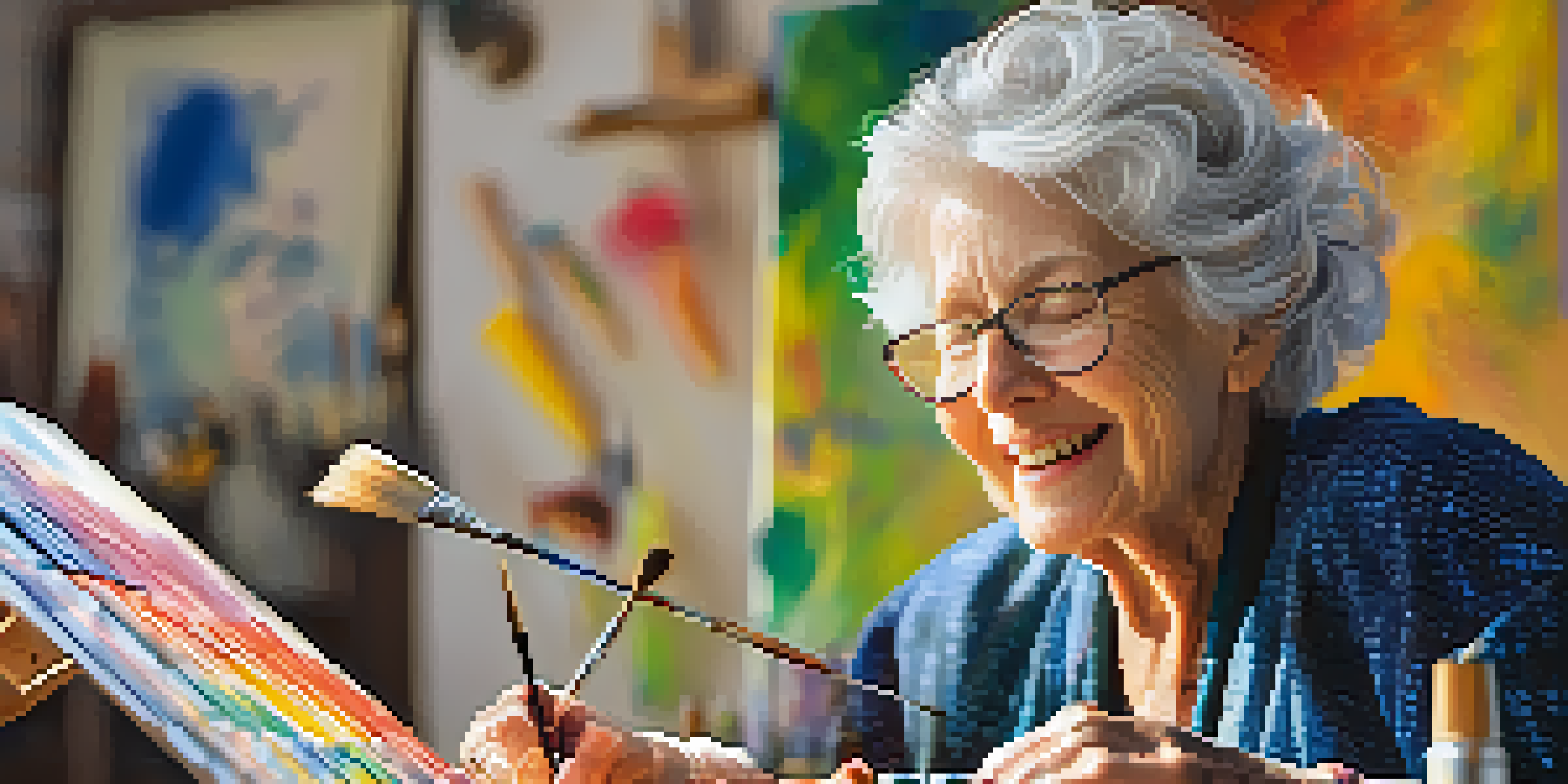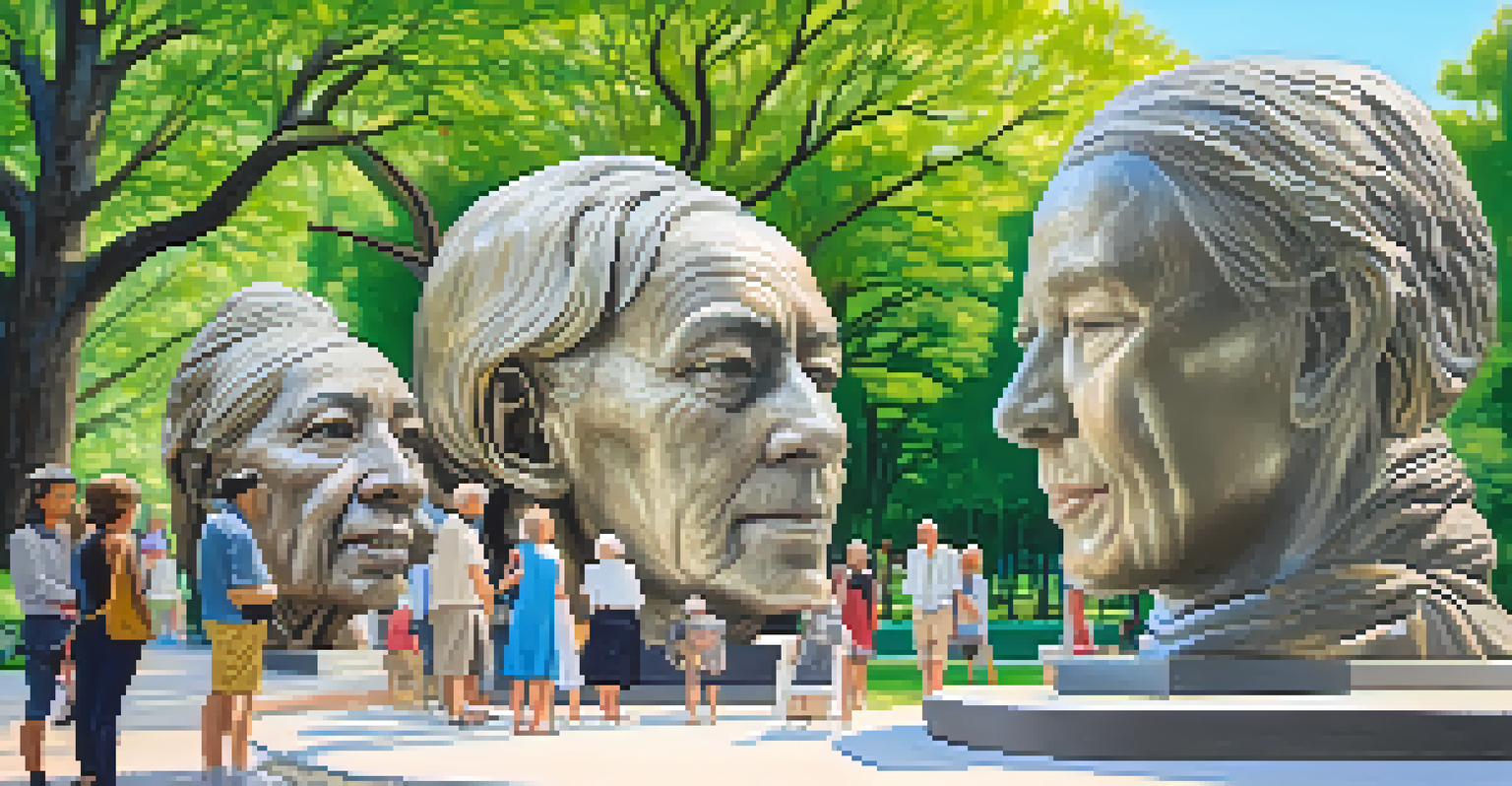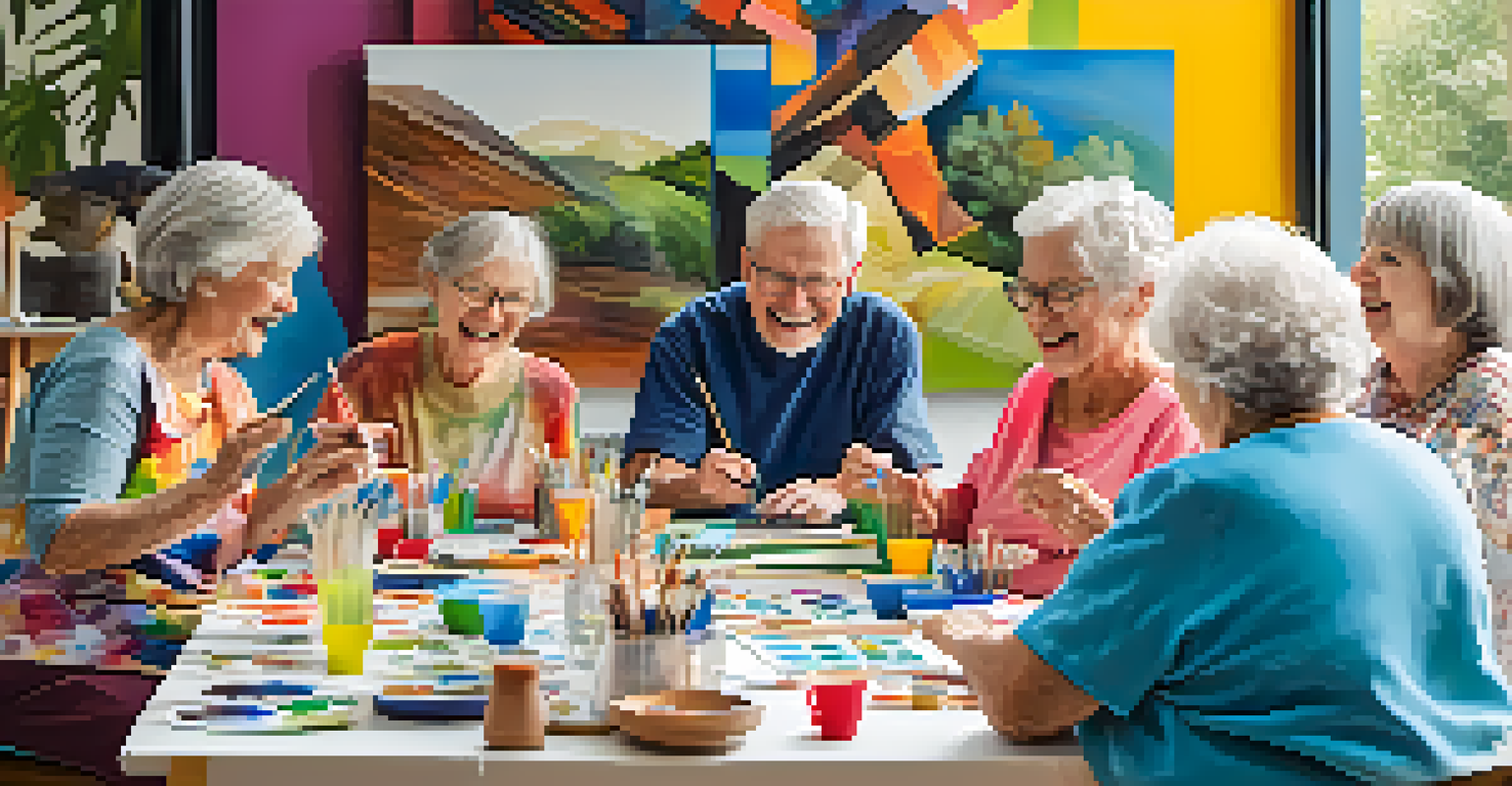Art as a Reflection of Aging in Contemporary Society

Understanding Aging Through the Lens of Art
Art has a unique ability to capture the essence of human experience, including aging. It serves as a mirror, reflecting societal attitudes towards older individuals and the aging process itself. By examining various art forms, we can uncover underlying messages about how aging is perceived in contemporary society.
Art is the most beautiful of all lies.
From paintings to photography, artists explore themes of aging, often challenging stereotypes and inviting viewers to rethink their assumptions. This exploration not only humanizes the aging experience but also fosters empathy and understanding. For instance, a series of portraits depicting elderly individuals can evoke a sense of connection and encourage dialogue about their lives.
Moreover, art can be a powerful tool for older artists themselves, allowing them to express their inner thoughts and feelings about aging. Their creativity offers insights into the joys and struggles of this life stage, making their perspectives invaluable to the broader conversation about aging in society.
The Role of Technology in Art and Aging
As technology continues to evolve, its impact on art creation and perception becomes increasingly relevant, especially for older generations. Digital art and social media platforms provide new avenues for older artists to showcase their work and connect with audiences. This not only empowers them but also encourages intergenerational exchanges that enrich the artistic community.

For example, virtual art exhibitions can reach a wider audience, breaking geographical barriers and allowing older artists to gain visibility. Additionally, technology enables innovative ways to document personal histories, such as video installations that capture the stories and experiences of older individuals. These projects can challenge ageist narratives, portraying aging as a rich tapestry of life experiences.
Art Reflects Attitudes on Aging
Art serves as a mirror to societal perceptions of aging, challenging stereotypes and fostering empathy towards older individuals.
Furthermore, art created with technology can also address themes related to aging, such as memory loss and nostalgia. By using interactive elements, artists can engage audiences in a dialogue about their relationship with aging, making the experience more personal and relatable.
Art as a Medium for Advocacy and Awareness
Art has long been a powerful means of advocacy, and this is particularly true when it comes to aging issues. Artists often use their platforms to raise awareness about the challenges faced by older adults, from healthcare access to social isolation. By highlighting these issues through their work, they can inspire change and encourage society to take action.
Aging is an extraordinary process where you become the person you always should have been.
For instance, installations that depict the realities of aging, such as loneliness or the need for companionship, can evoke strong emotional responses. These pieces serve as a call to action, prompting viewers to reflect on their own perceptions of aging and the role they can play in supporting older individuals. Art becomes a catalyst for meaningful conversations around societal responsibilities.
Moreover, community-based art projects can empower older adults by involving them in the creative process. These initiatives not only foster a sense of belonging but also help to challenge stereotypes surrounding aging. By giving older individuals a voice, art can contribute to a more inclusive society.
Exploring Identity and Aging in Artistic Expression
Aging can profoundly impact one's identity, and artists often explore this dynamic in their work. The transition into different life stages can lead to a reevaluation of self, which can be beautifully expressed through various art forms. For instance, an artist might use self-portraits to illustrate the physical and emotional changes that accompany aging.
This exploration of identity allows artists to connect their personal experiences with broader societal themes. It can spark conversations about how culture, gender, and race intersect with aging, revealing the diverse narratives that exist within this life stage. Through their art, they can challenge the monolithic view of aging, showcasing the individuality of each person's journey.
Technology Empowers Older Artists
Advancements in technology provide older artists with new platforms to showcase their work and connect with audiences, enhancing intergenerational dialogue.
Furthermore, the act of creating art itself can be a means of reclaiming identity. For older artists, engaging in creative activities can reinforce a sense of purpose and self-worth, proving that age is not a barrier to creativity. This narrative shift encourages society to embrace aging as a time of continued growth and exploration.
The Therapeutic Benefits of Art in Aging
Art is not only a form of expression but also a therapeutic tool, especially for older adults facing physical or emotional challenges. Engaging in creative activities can enhance mental well-being, reduce feelings of isolation, and improve overall quality of life. Art therapy programs specifically designed for seniors have gained popularity, showing promising results.
For example, painting or sculpting can serve as a form of self-care, providing a constructive outlet for emotions. Older individuals often find joy and fulfillment in the process of creation, which can alleviate symptoms of depression and anxiety. The act of making art allows them to focus on the present moment, fostering mindfulness and relaxation.
Moreover, art can facilitate social connections, as group workshops encourage interaction among participants. These shared experiences can lead to lasting friendships and a sense of community, which are essential for combating loneliness. By promoting both individual expression and social engagement, art can significantly enhance the aging experience.
Redefining Beauty Standards Through Aging Art
Contemporary art often challenges traditional notions of beauty, especially as they pertain to aging. Artists are increasingly embracing the beauty of imperfection, celebrating the natural signs of aging like wrinkles and gray hair. This shift invites society to reevaluate its standards and appreciate the unique stories etched into each line and mark.
For instance, photography that focuses on the beauty of aged skin can provoke thought and discussion about the unrealistic ideals often portrayed in media. By showcasing the authentic beauty of aging, artists encourage viewers to embrace their own aging processes without shame or fear. This transformation in perspective can lead to a more inclusive definition of beauty that honors all stages of life.
Art as Advocacy for Aging Issues
Artists use their work to highlight challenges faced by older adults, inspiring societal change and promoting inclusivity.
Additionally, this redefinition of beauty can empower older individuals, helping them feel valued and appreciated. As art celebrates the aging process, it fosters a culture of acceptance and appreciation for the wisdom and experiences that come with age. Ultimately, this shift can contribute to a more positive societal view of aging.
The Future of Art and Aging in Society
Looking ahead, the relationship between art and aging is likely to evolve further, driven by cultural shifts and advancements in technology. As society continues to confront demographic changes, the representation of aging in art will become increasingly important. Artists will play a crucial role in shaping perceptions and narratives around aging.
Emerging artists and older generations alike will continue to explore themes of aging, ensuring that diverse voices and experiences are represented. Collaborative projects that bridge generational gaps can foster understanding and appreciation for the unique perspectives each age group brings to the table. This inclusivity can enrich the artistic landscape and promote a more comprehensive understanding of aging.

Furthermore, as the population of older adults grows, the demand for art that reflects their realities will likely increase. This shift presents an opportunity for artists to engage with and advocate for older individuals, creating work that resonates with their experiences. Ultimately, the future of art and aging holds great promise for fostering empathy, understanding, and connection across generations.